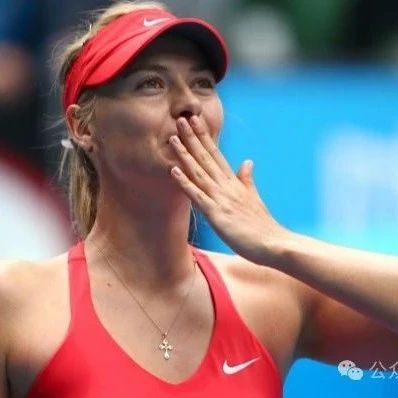The Skeletal Lever System and Relaxed Ball Striking
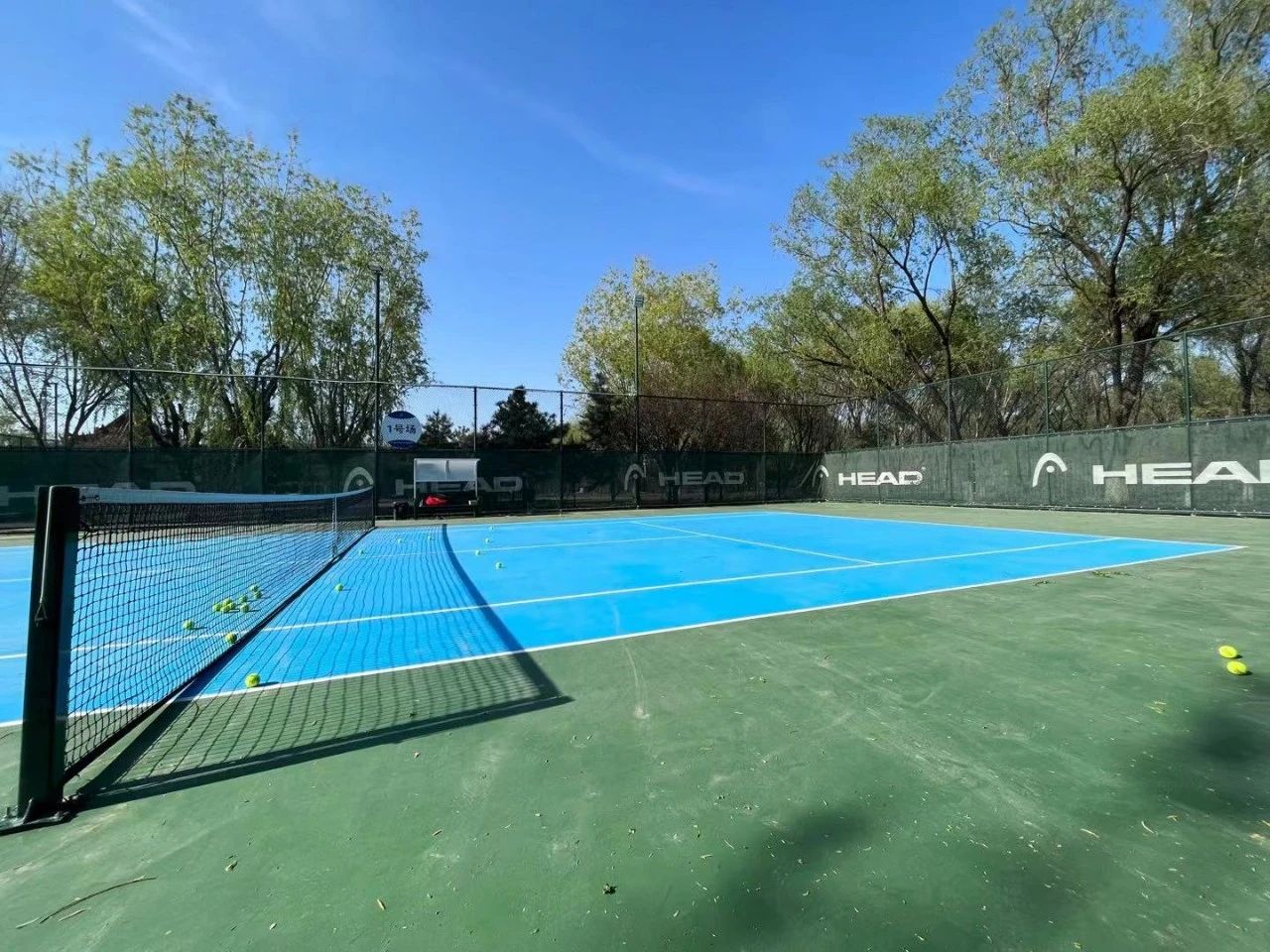
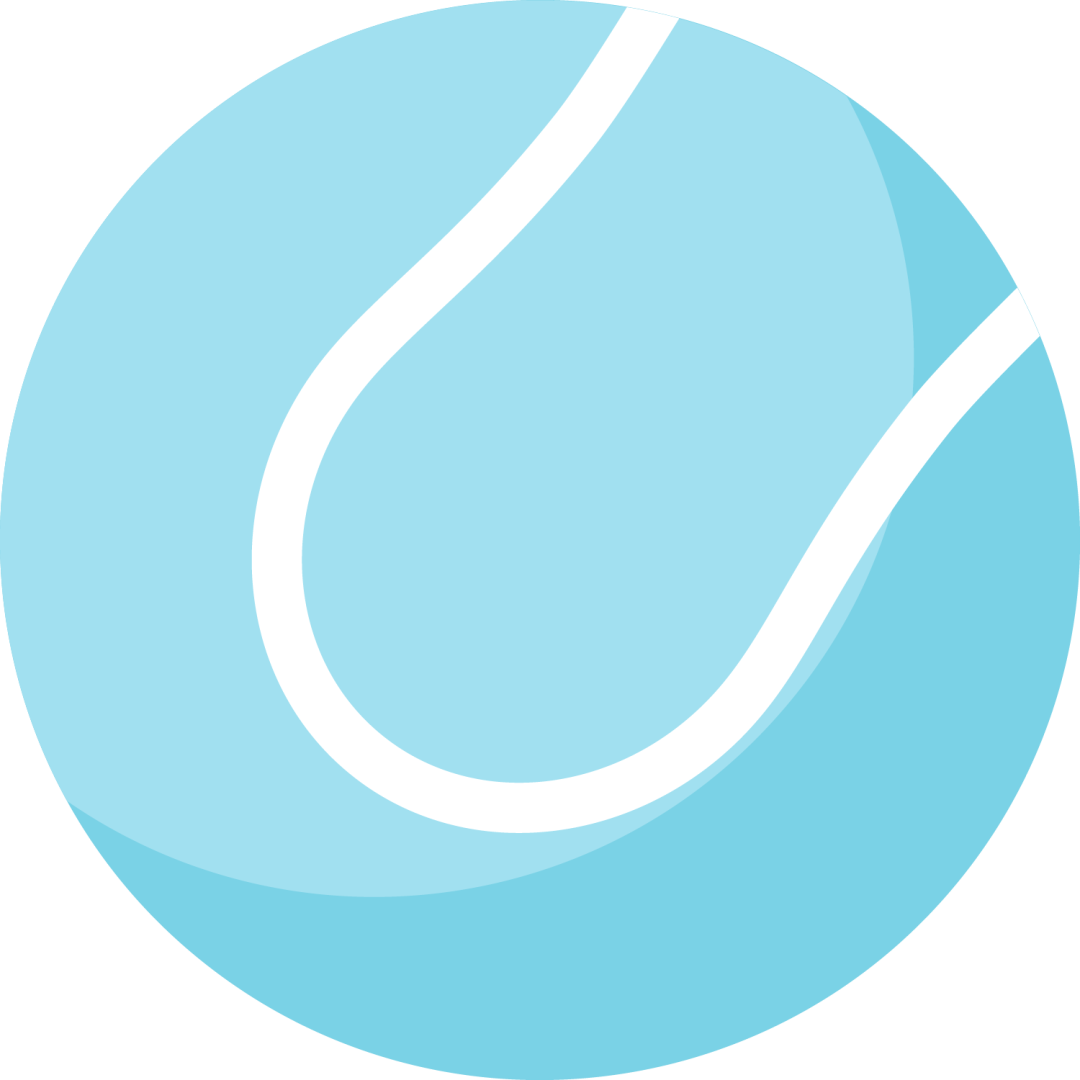
You are my eyes,
Take me on a journey through the changing seasons.
You are my eyes,
Take me through the crowded throng.
You are my eyes,
Take me to explore the vast sea of books.
Because you are my eyes,
Let me see this world.
— "You Are My Eyes"
"The song 'You Are My Eyes' is deeply embedded in the youthful memories of those born after 1995. 'The apple of my eye,' meanwhile, symbolizes how everyone in our lives plays a role in helping us discover and appreciate this beautiful world."
From the perspective of tennis education, coaches are the learners' eyes—each coach shapes the way students perceive the "mountainous heights" of tennis. And just as the size of your viewpoint determines how high the mountain appears, the depth of your coaching approach directly influences how far and clearly players can envision their potential in the sport. At its core, training is about education: the ability to explain the essence of things in a clear, systematic, and interconnected manner—a skill that every educator must master.
From the perspective of tennis learning, learners are the eyes of the coach—after all, constructive feedback on learning outcomes directly affirms the coach’s value and serves as the window through which the coach can truly unlock the "house of teaching methods." And just as the size of that window determines how brightly lit the room becomes, the level of a learner’s proactive thinking is the cornerstone for success in both learning and professional endeavors. It enables learners to explore, ask insightful questions, and approach uncertainties with an insatiable thirst for knowledge—qualities that every learner must cultivate as part of their foundational skill set.
Returning to the topic of tennis training, we often see coaches repeatedly emphasizing a particular technique, yet students not only fail to improve—they may even start moving in the wrong direction. Despite countless attempts to refine the movement, they still can’t achieve genuine progress. Such "tragedies" are unfortunately inevitable unless coaches strive to enhance their own teaching skills and learners work harder to deepen their understanding.
The original intention of this article is to explain, in simple and accessible language, what it means to "relaxed hitting"—and how to use the skeletal lever system to determine whether your movements are correct.
Hitting Philosophy
Question 1: Is the arm really a whip, or a mechanical lever?
Question 2: Is rotation ultimately a wrapping motion or a relative movement?
The two questions above touch on the very essence of every batting technique. The answers to these questions will determine whether a player can ultimately achieve a breakthrough in their performance—serving as the guiding benchmark for future progress.
Regarding the first issue, the author has observed that superficial concepts like "whipping," "wiper," and "back scratch" have been circulating too widely—and for far too long—within the domestic tennis community, trapping many players in their grasp. While the "whipping effect" might indeed carry positive implications for tennis instruction, it essentially describes how "speed builds up progressively through the kinetic chain, culminating in maximum velocity at the extremities of the body." Beyond this definition, however, invoking the "whipping effect" often leads to misunderstandings, causing players to mistakenly adopt an overly relaxed approach. The author herself has long struggled with the challenge of not being able to make her arm as supple as a whip—or, frankly, as flexible as a rattle—to effectively accelerate the racquet during the swing. (Being as soft as a whip would surely spell disaster for my joints—haha!)
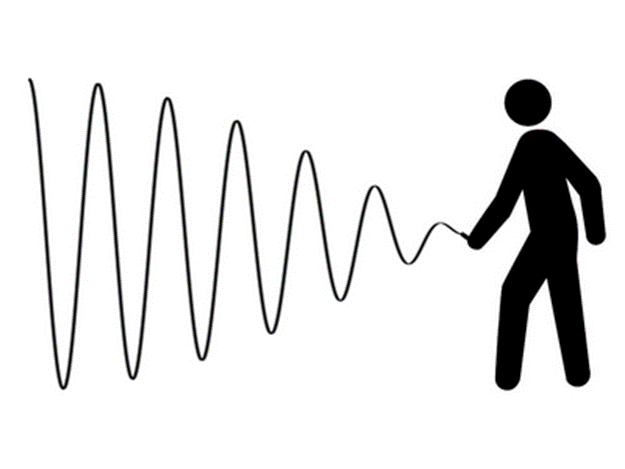
The whip generates significant speed due to the oscillation of its tail.
In fact, unlike a flexible whip that can swing freely in any direction, our arms are more like a "nunchaku"—a weapon made of interconnected segments held together by joints and bones. Because joints have limited degrees of freedom, bones can only bend at specific angles, while muscle contractions provide the force that drives this bending motion.
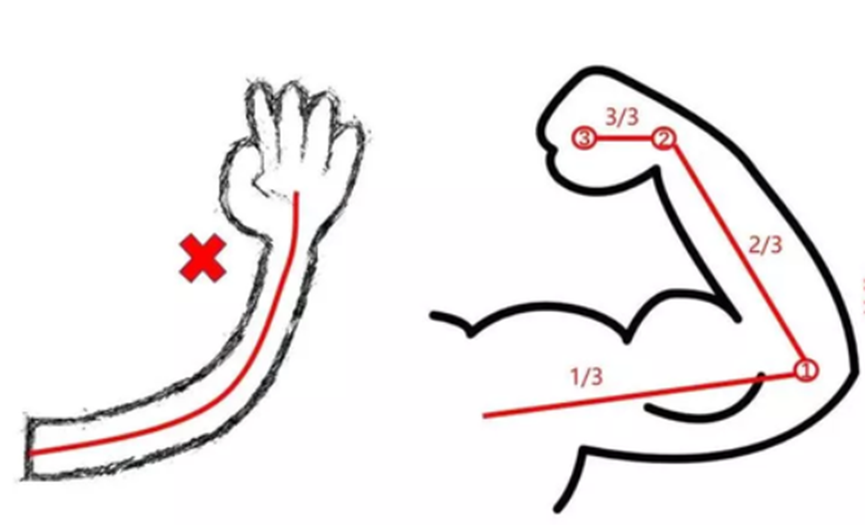
Our bones are like a "nunchaku."
The answer to the first question is, the arm acts as a mechanical lever—so if you want better control and faster racket head speed, you’ll need to study the body’s skeletal lever system.
Regarding the second question, the author has already addressed it in the preceding section."Rooted and Thriving | A Little Control Goes a Long Way"As previously discussed, the racket and ball come into contact for only a few milliseconds during impact. It’s simply impossible to "wrap" the ball like a "peaceful fruit"—that is, to rotate the racket face around the center of the tennis ball to dramatically increase spin. Instead, the most plausible explanation lies in the fact that the collision between the ball and racket generates forward pressure, which in turn boosts surface friction. At the same time, relative motion occurs between the two surfaces—and the faster this relative motion becomes, the more intense the spin turns out to be. Without sufficient friction from the collision, there wouldn’t be enough grip; yet without the necessary relative motion happening simultaneously, the full potential for spin cannot be achieved.
The answer to the second question is, the spin originates from the relative motion after the collision, while the racket's upward motion comes from the vertical tensile force exerted by the muscles along a line perpendicular to the ground.
Relax your swing
Force doesn’t appear suddenly, nor does it stop abruptly—muscle strength builds steadily over time as a cumulative result, while its decline is the gradual outcome of diminishing reserves. In the field of muscle kinetics, the body is viewed as a biological machine, where muscle power drives the movement of skeletal levers to perform external work. As part of the body’s skeletal lever system, the entire arm cannot achieve the desired racket-head speed and control simply by relaxing. Instead, a relaxed swing can be understood as the coordinated activation of agonist muscles within the kinetic chain, with antagonist muscles remaining relaxed without compromising the contraction of the active muscles. Meanwhile, muscles outside the kinetic chain remain loose and do not contribute to the motion.
Why exactly is it difficult for beginners to hit the ball with a relaxed swing?
Primarily, beginners fail to master active muscle engagement and instead rely on improper use of external muscles in the kinetic chain—these are the two main reasons. As for the relaxation of antagonistic muscles during the hitting phase, that’s an issue more advanced players need to address (though complete relaxation of antagonistic muscles isn’t entirely possible; in fact, these muscles play a critical role in deceleration and injury prevention during the follow-through).
From the perspective of the powertrainFirst, one isThe kinetic chain in tennis movements is longer than that of more common functional actions like writing or grasping. Completing any single movement requires the coordinated effort of the entire kinetic chain—muscles working in harmony. The longer the kinetic chain, the greater the challenge for players to master the precise sequencing and balance of muscle activation. Additionally, everyday tasks such as gripping or picking up objects typically rely heavily on strength at the body’s extremities. In contrast, tennis strokes generate power from the core outward, with minimal involvement of distal forces. As a result, beginners often inadvertently overuse their forearm muscles (both in terms of timing and intensity), disrupting the proper sequencing and distribution of force throughout the entire kinetic chain due to prior movement habits.
From the perspective of neural recruitmentMost human movements are controlled by the brain through the nervous system, which coordinates muscle contractions. Mastering a movement requires developing a specific neural recruitment system—typically, frequently used movements rely on stronger neural recruitment compared to less common ones. In tennis, however, all technical strokes are considered uncommon actions, necessitating the establishment of a unique neural recruitment pattern. Until this specialized neural chain for generating hitting power is fully developed, players often end up blindly relying on their well-established neural systems for more familiar movements. As a result, they may involuntarily activate muscles that shouldn’t be engaged while failing to recruit the right muscles when it’s actually needed.
Absolutely do not assume that increasing swing speed is simply a result of being completely relaxed—on the contrary, complete relaxation not only has limited impact on boosting speed but can also lead to structural damage in your joints. Each joint in the body is designed to move only within specific angles due to its unique anatomical structure; forcing it beyond these natural limits can cause irreversible structural harm. Instead, we need to engage muscular strength to guide bones into the desired positions. If you remain completely loose and allow joints to move freely outside their normal range of motion, it could easily result in injury—most joint injuries, unfortunately, are permanent and cannot be reversed.
Having a solid understanding of the skeletal lever system and neural recruitment in the kinetic chain is key for players to master relaxed hitting. Applying force appropriately provides the best protection for your joints—overly relaxing, on the other hand, can actually harm you.
Three types of skeletal levers
The principle of the lever was initially discovered while designing tools: for a lever to achieve static equilibrium, the product of the effort force and its corresponding effort arm must equal the product of the resistance force and its resistance arm—expressed as F1 × D1 = F2 × D2 (as shown in the diagram below).
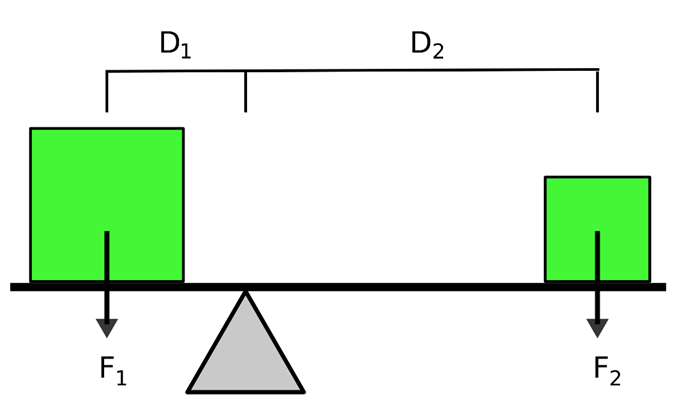
A lever in static equilibrium
Both human skeletal levers and simple machine levers follow the principle of leverage and can each be categorized into three types based on the relative positions of the effort point and the fulcrum: balanced levers, force-saving levers, and speed levers. The key difference, however, is that when analyzing human movements, we no longer rely on the concepts of "power" and "resistance." Instead, we describe forces using two distinct categories: **internal forces**—forces generated within the body—and **external forces**—forces originating outside the body.
The following introduces examples of the three types of levers in the human body, categorized according to their correspondence with human skeletal levers and simple machine levers.
First-class lever (balance lever)
Similar to a seesaw, the fulcrum lies between internal and external forces.
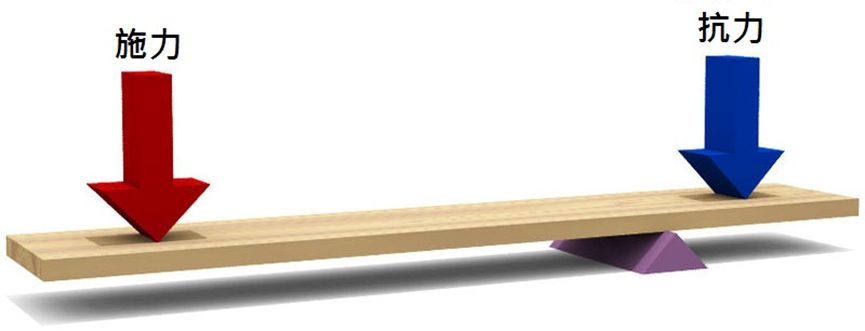
Diagram of a first-class lever: The effort point and the load point are on opposite sides of the fulcrum.
First-class lever in the human body
The neck extensor muscles work hard to support the head.
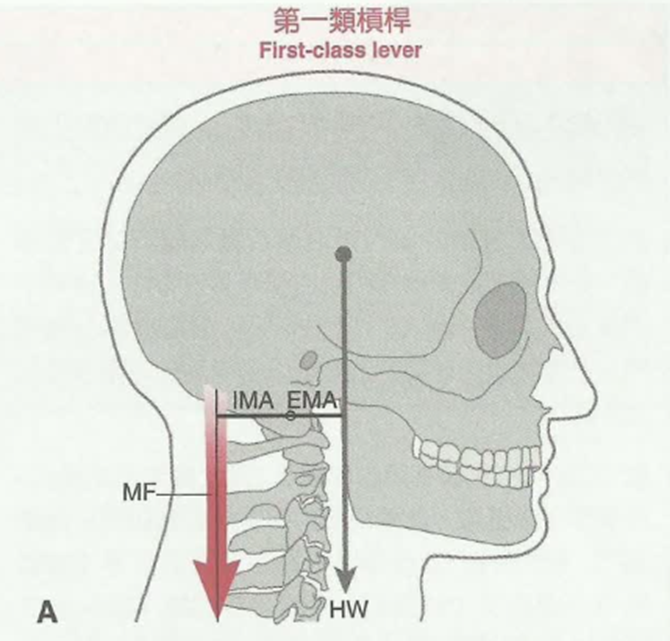
Example of a first-class lever: Using neck strength to support the head
In this instance, with the top of the spine serving as the fulcrum, muscle force MF acts on the internal moment arm IMA, while gravity HW acts on the external moment arm EMA.
MF * IMA = HW * EMA—this is when the head reaches static equilibrium.
Second-class lever (force-saving lever)
Similar to a unicycle, the power point and the resistance point are on the same side of the fulcrum, with the power arm longer than the resistance arm, allowing you to lift heavier objects with less effort.
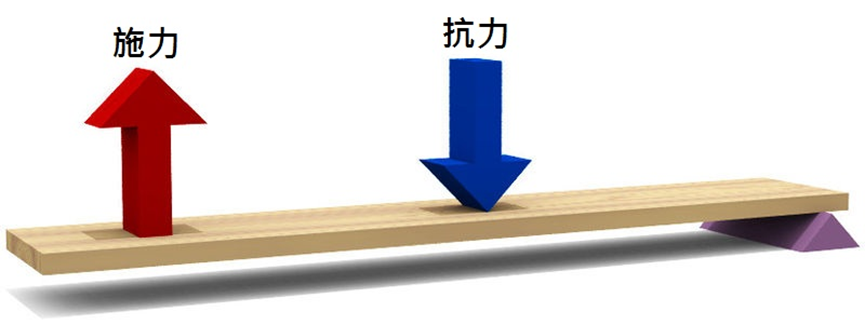
Diagram of a second-class lever: The effort and load are on the same side of the fulcrum, with the effort arm longer than the load arm.
Example of a Class II Lever in the Human Body
The plantar flexor muscles lift the body.
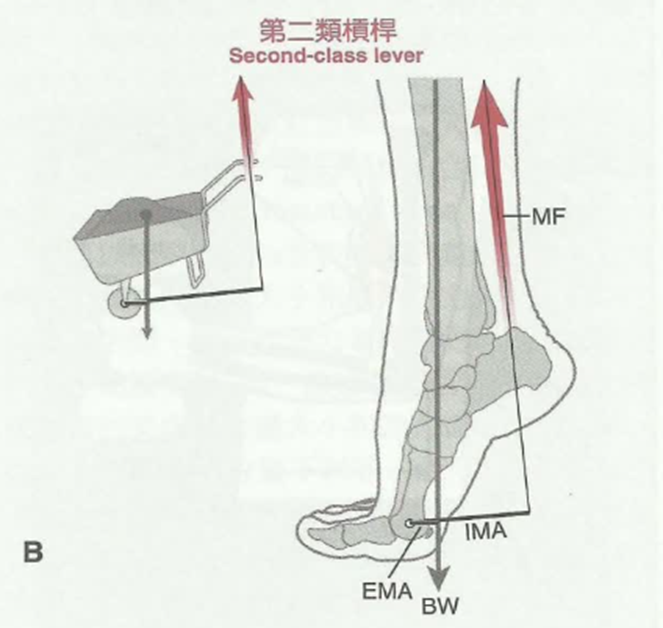
Example of a second-class lever: The plantarflexor muscles lift the body.
In this instance, with the distal metatarsal as the fulcrum, muscle force MF acts on the intrinsic lever arm IMA, while gravity BW acts on the external lever arm EMA.
MF * IMA = BW * EMA—this is when the body reaches static equilibrium. Since the length of the internal force arm IMA is shorter than that of the external force arm EMA, only a minimal amount of force is required to lift the entire body upward.
Third-class lever (speed lever)
Similar to a broom, the fulcrum, effort point, and load point are all on the same side, with the resistance arm longer than the effort arm—allowing you to move an object more easily by applying relatively less force.
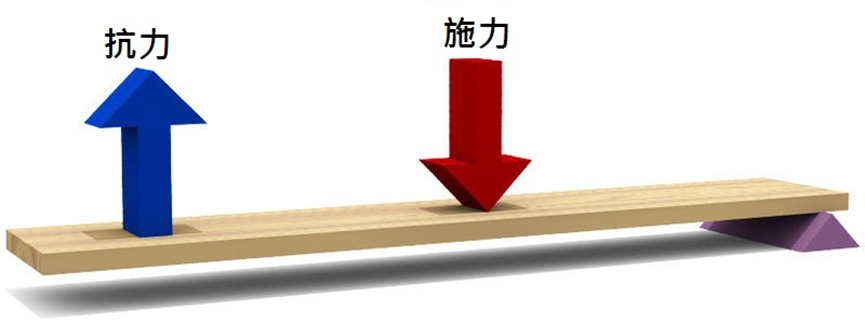
Diagram of a third-class lever: The effort and resistance are on the same side of the fulcrum, with the effort arm longer than the resistance arm.
Third-class lever in the human body: an example
The biceps muscle contracts to lift the heavy object.
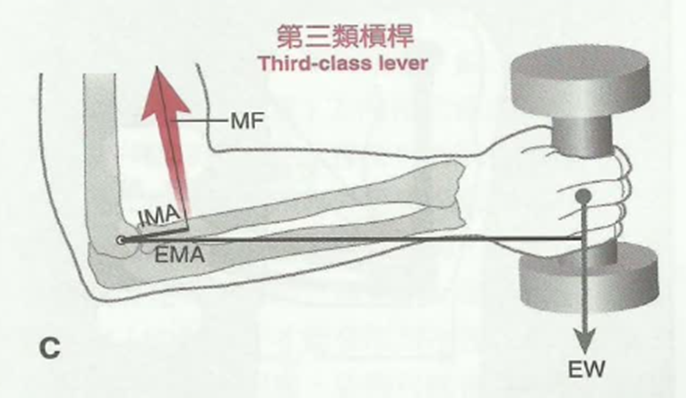
Example of a third-class lever: The biceps muscle contracts to lift a weight.
In this instance, with the distal humerus serving as the fulcrum, the muscle force MF acts on the internal moment arm IMA, while the weight of the object EW is applied at the external moment arm EMA.
MF * IMA = EW * EMA—this is when the body reaches static equilibrium. Since the length of the internal force arm IMA is shorter than that of the external force arm EMA, the biceps muscle must generate a significant amount of force to produce a substantial upward displacement of the weight.
Are three types of skeletal lever designs optimized for just one of two goals—either strength or speed?
A force-reducing lever that is advantageous for applying less muscular effort results in a smaller displacement (and reduced speed) at the end opposite the fulcrum.
The speed lever, which favors velocity, requires greater muscular effort to generate a larger displacement (velocity amplification) at the far end of the fulcrum.
Most of the skeletal levers in the body are classified as third-class levers (velocity levers), since the speed at which the limbs' ends move is typically faster than the rate of muscle physiological contraction. The following discussion focuses specifically on third-class levers (velocity levers).
The leverage of speed
Vertical head speed
While most skeletal lever systems are classified as speed levers, the muscles that control these levers have varying force arms. As a result, even though they all function as speed levers, specific muscles may differ in whether they favor power or, alternatively, speed and distance in terms of their functional roles.
Take the example of elbow flexion, which is produced by the contraction of the biceps brachii and brachioradialis muscles. While both muscles contribute to lifting the hand (as shown in the figure below), their activation by the nervous system varies dramatically depending on the specific goal being pursued. Only by appropriately coordinating these muscles can we maximize the upward speed of the hand—and consequently, the head speed in the vertical direction, which directly influences the generation of topspin.
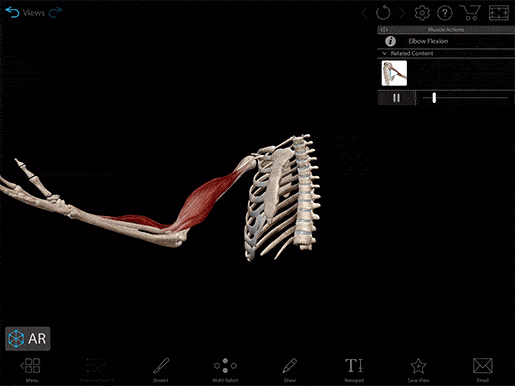
The biceps and brachialis muscles contract to produce elbow joint flexion.
For ease of calculation, we make the following assumption: the internal lever arm of the biceps is 1 inch, while that of the brachialis is 3 inches—creating a 3-to-1 ratio between the two. If a 10-pound weight is held at a point 15 inches away from the elbow joint, to maintain static equilibrium in the arm, the muscles must generate a torque of 150 inch-pounds (Torque = Force × Lever Arm).
Labor-saving advantage
Due to the threefold difference in lever arm length, when lifting the same weight, the force generated by the brachioradialis muscle contraction is only one-third that of the biceps muscle.
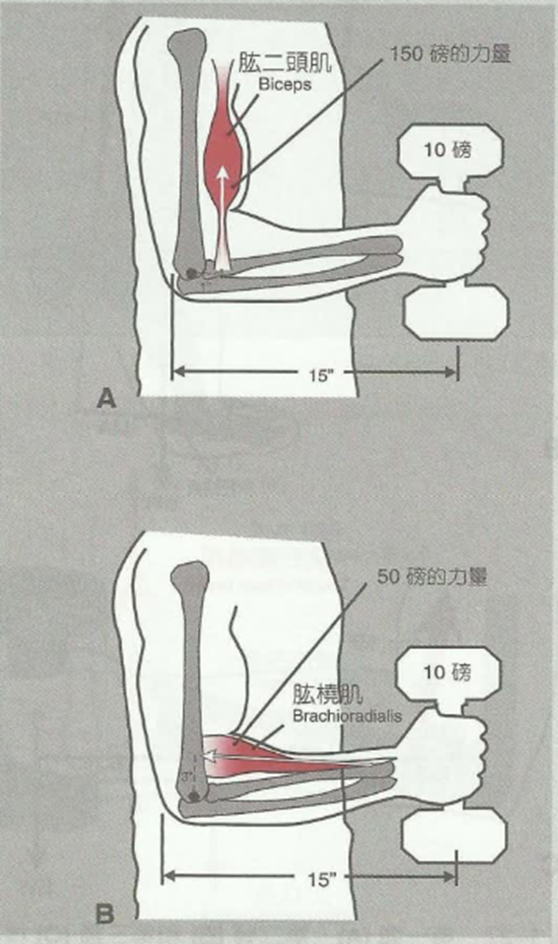
Diagram showing how the brachioradialis muscle requires less effort than the biceps brachii.
Speed advantage
A one-inch shortening of the biceps muscle enables the hand to lift 15 inches, while a similar one-inch contraction of the brachioradialis muscle lifts the hand 5 inches. Assuming both muscles contract at the same rate, the biceps generates hand movement three times faster than the brachioradialis. As a result, the biceps clearly holds the upper hand when it comes to accelerating the hand—and, by extension, speeding up the clubhead during the swing.
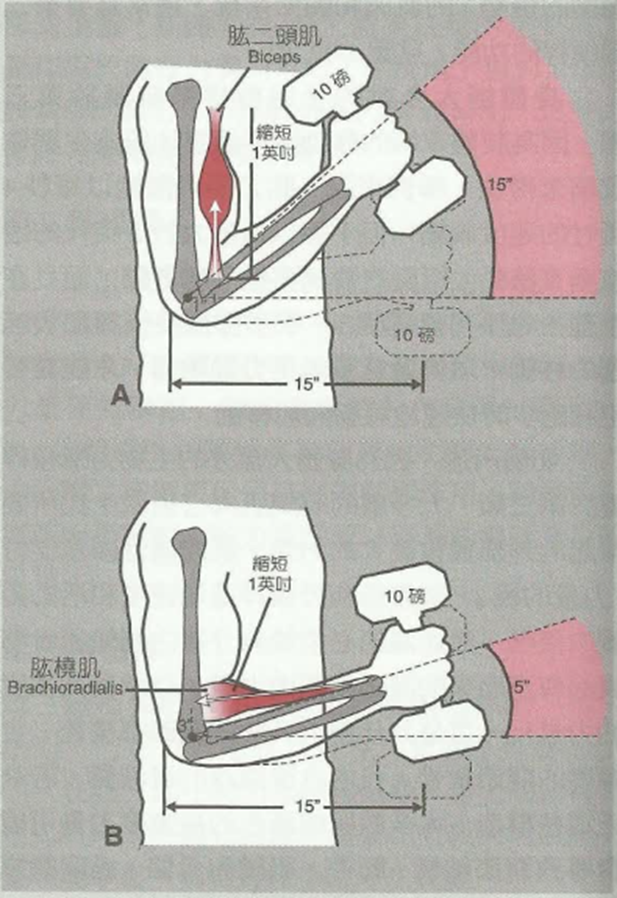
The biceps brachii shows a more pronounced acceleration effect compared to the brachioradialis.
Topspin in tennis arises from the relative motion between the ball and the racket—specifically, the racket moves upward relative to the tennis ball, while the ball moves downward relative to the racket. The faster this relative motion is, the greater the spin speed will be. To achieve this, we rely on the biceps muscle contracting to dominate the upward acceleration of the hand.
Example Analysis of the Skeletal Lever System
The upward acceleration of the racket is systematic—these two muscles alone cannot generate greater rotational force. However, during the analysis phase, we’ll focus exclusively on the effects of the biceps and brachioradialis muscles.
Topspin comes from the racket's vertical motion—both muscles can generate upward velocity in the hand, but is it primarily driven by biceps contraction, or is it more dominated by brachioradialis contraction?
Example of Incorrectly Using the Brachioradialis Muscle to Generate an Upper-Spin Ball
Let's first examine the player's kinetic chain.
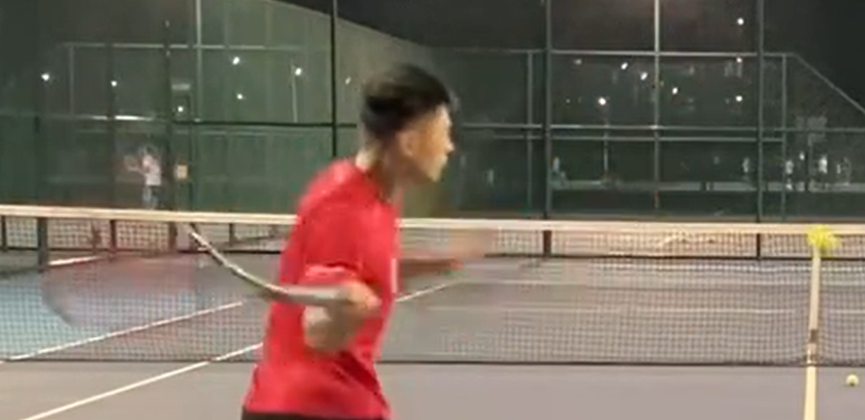
Lower the barbell, and engage your biceps by squeezing your arms together.
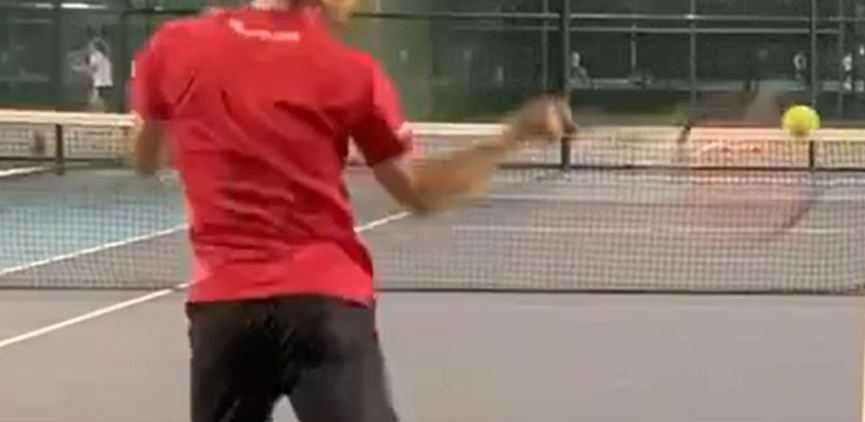
When swinging the bat, the brachioradialis muscle is in the contraction phase.
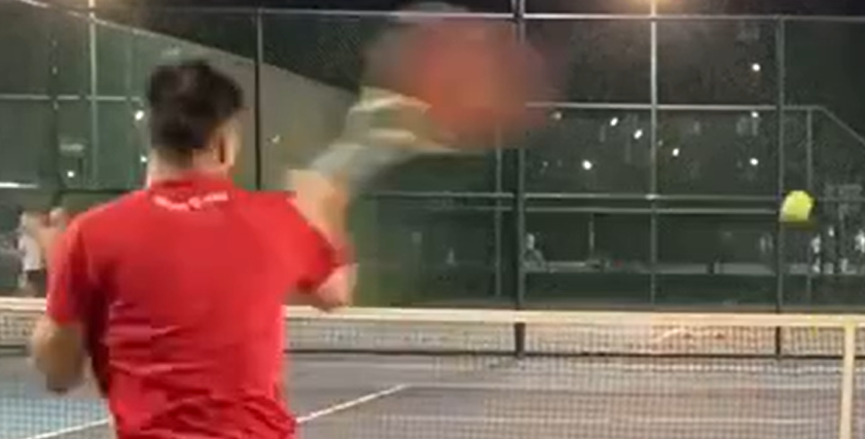
After the follow-through, the brachioradialis and biceps muscles continue to contract, causing the forearm to slowly pronate.
In this example, the player’s swing motion is quite wide, creating what appears to be a significant arc at the racquet head. However, this exaggerated movement actually makes it difficult to generate the intended spin. Upon closer inspection of the player’s elbow joint, we notice that the upper arm remains tightly engaged, causing the entire arm to lift upward. The dominant action here comes from the contraction of the brachioradialis muscle—while this technique saves effort, it results in a vertical racquet-head speed that’s several times slower than necessary. Meanwhile, the biceps brachii muscle maintains nearly the same length before and after impact. This particular does produce some degree of spin (since spin inherently arises from relative motion), but by relying on the wrong set of muscles, the efficiency of the stroke is compromised—and worse yet, it increases the risk of injury.
The correct method for using bicep contraction to generate an uppercut shot
We’re examining Djokovic’s kinetic chain.
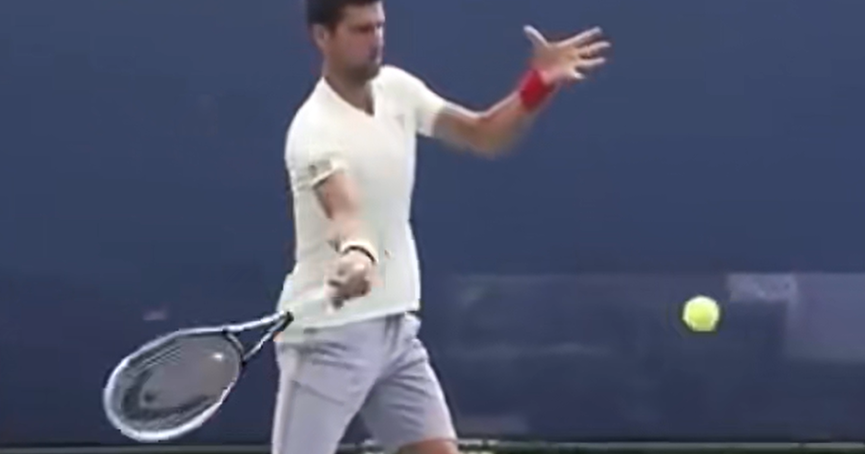
Lower the barbell, and the biceps are stretched.
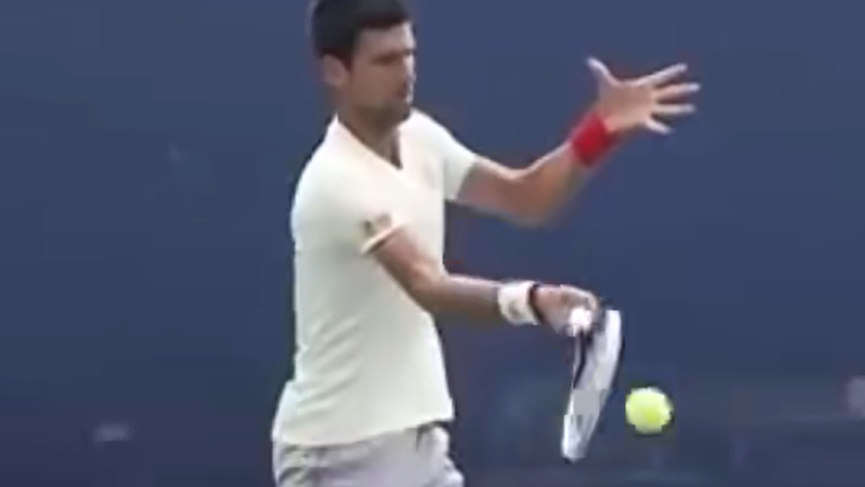
Before swinging the bat, the biceps muscle contraction takes precedence.
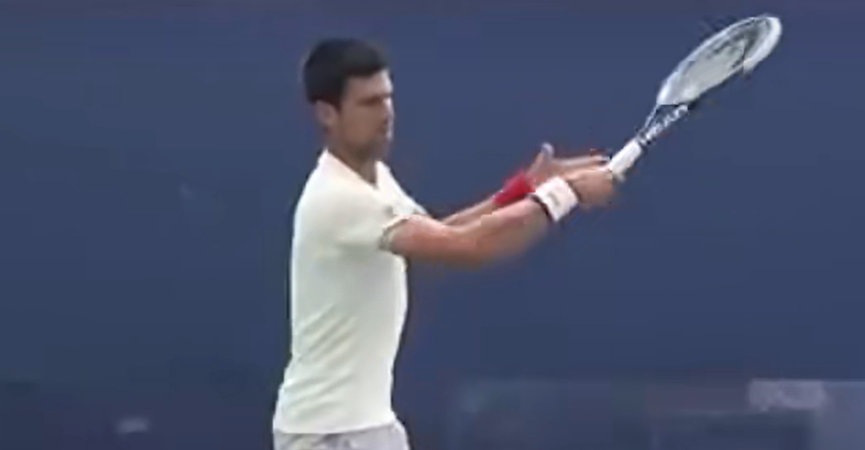
After hitting the ball, the forearm rotates forward.
Throughout Djokovic's entire forehand motion, the biceps undergo a prolonged stretch-and-contract cycle, with significant upward and downward movement of the hand. Before impact, bicep contraction dominates, more effectively generating vertical velocity in the hand—though this requires greater effort, it ultimately produces higher vertical racquet-head speed. During the follow-through phase, forearm pronation plays a key role in slowing down the swing. Meanwhile, the brachioradialis muscle contributes relatively little to the overall action.
Conclusion
A proper hitting technique is the result of effectively utilizing the skeletal lever system. With consistent training, we can master the dominant muscle activation patterns and the sequence of force application. Once the kinetic chain is fully understood, strengthening muscles for power, explosiveness, and endurance naturally becomes the next step in elevating your hitting performance.
Next time you play, don't let yourself relax blindly again.
(*^_^*)
